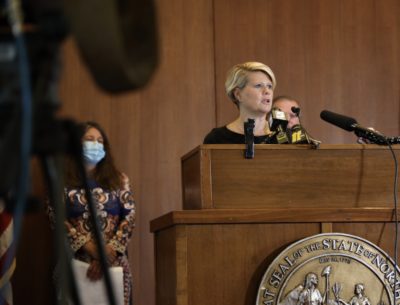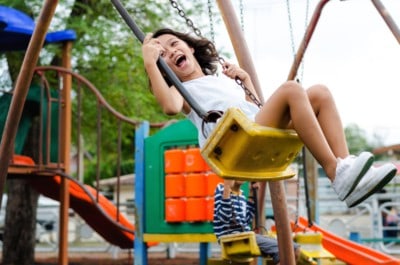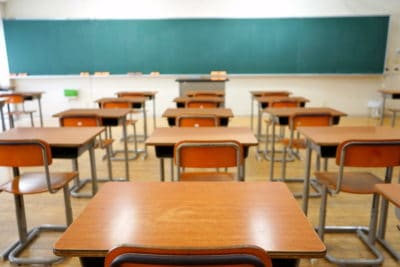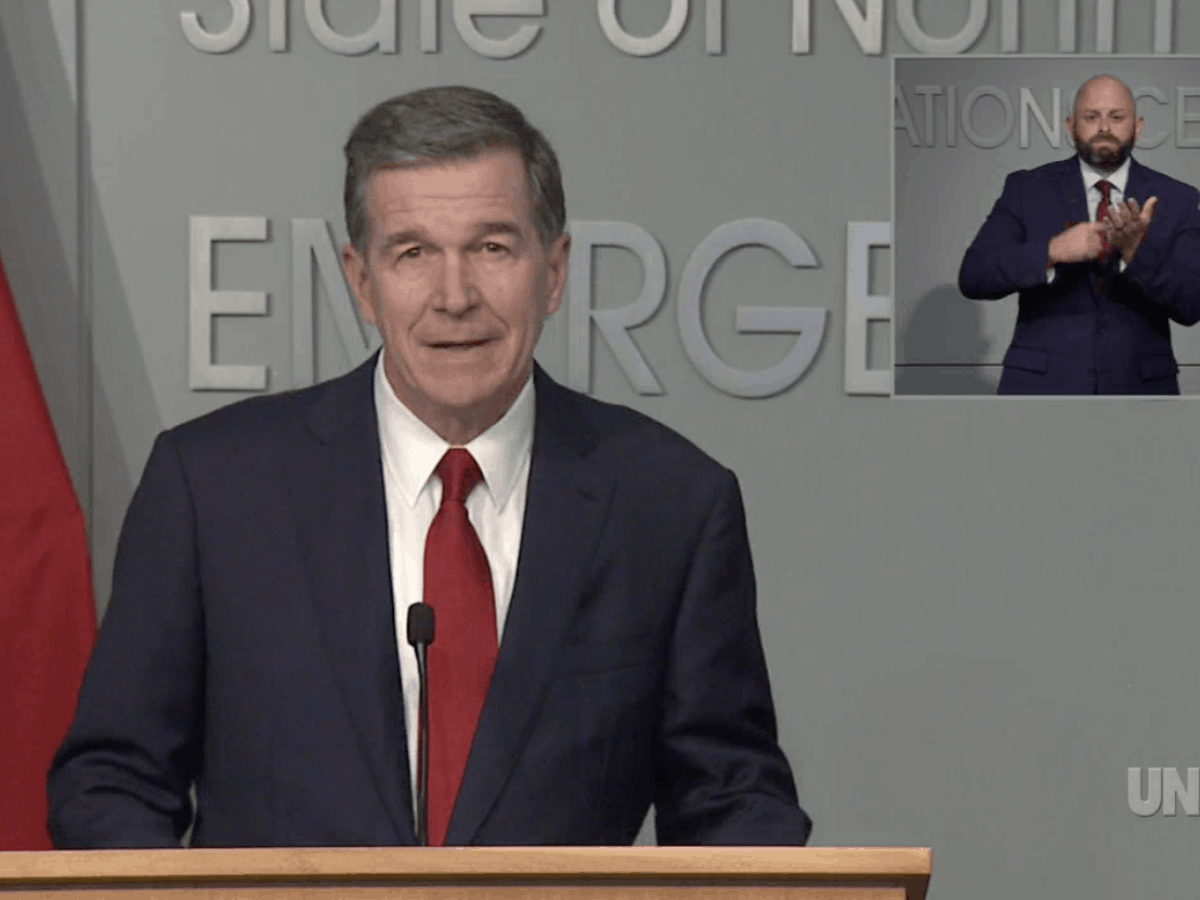
North Carolina’s public elementary schools — kindergarten through fifth grade — will be allowed to move to all in-person instruction starting Oct. 5, Gov. Roy Cooper announced Thursday.
That option, called plan A or option A in the state’s menu of instructional scenarios during the COVID-19 pandemic, will not yet be available for grades 6-12, Cooper said. Those grades must continue for now under plan B, a blended model where students alternate between online learning and in-person instruction at reduced building capacity, or plan C — all-remote instruction.
The Oct. 5 date was chosen, Cooper said, to give districts that choose to go to plan A the time they need to work out logistics of transportation and safety.
Cooper made the announcement at his regular COVID-19 briefing Thursday, citing stabilized numbers for the coronavirus in the state. “North Carolinians are doing the hard work to improve our numbers and trends,” he said. “Many people are wearing masks, keeping social distance, and being careful to protect others as well as themselves. We have shown that listening to the science works.”
Plan A will still require that all students, teachers, and staff wear face coverings, maintain social distancing, and be screened for COVID-19 symptoms, a statement from the governor’s office said. But it does not require schools to reduce the usual number of children in the classroom.
Parents of K-5 students in plan A districts will also retain the option of remote learning.
Why just K-5?
Mandy Cohen, state secretary of health and human services, said the decision to limit the plan A option to grades K-5 came down to two reasons: “higher benefit, lower risk.”
“We know that for our younger kids, it is even more important in terms of having that in-person instruction,” Cohen said. “So, the benefits are higher.
“But as we look at the risk also there seems to be just a different way that the virus is interacting with our younger kids. They seem to get COVID less often. They get less severely sick, and they transmit it less often.
“It doesn’t mean that they don’t transmit it at all, doesn’t mean that they can’t get it at all. It just seems like there is a difference in the way in which the virus is impacting those kids … which means the risk is lower.”
Schools that consider plan A for grades K-5 should follow the health and safety requirements in the updated StrongSchoolsNC Public Health Toolkit, said Rebecca Planchard, senior early childhood policy advisor in the state Department of Health and Human Services (DHHS), in a statement. She said they should consider measures such as cohorting — putting teachers and students in small groups that stay together as much as possible, and limiting the mixing of such groups.
Under plan A, schools also are advised — but not required — to operate school transportation under plan B requirements, which are on Page 14 of the Toolkit document, to reduce the density of students on buses.
DHHS also has updated its frequently asked questions document to assist families, school officials, and local health leaders, Planchard said.
What’s next for grades 6-12?
Cohen said a future decision on moving grades 6-12 to plan A would depend not just on stable COVID-19 metrics, but logistics.
“Understand that there are extensive safety protocols that are required whether you’re in plan A or plan B,” she said, “and that takes time and effort to make sure those protocols can be put into place before students can come back into those buildings.”
Related reading
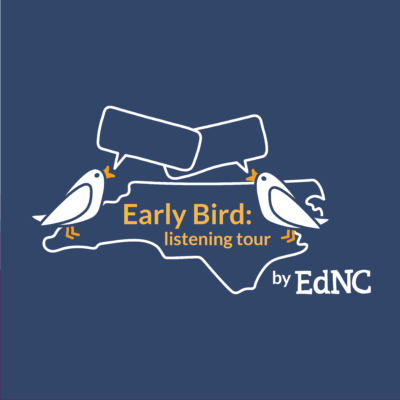
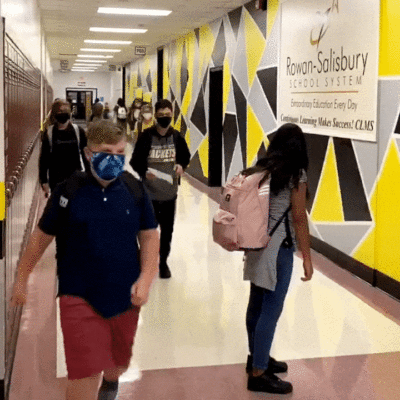
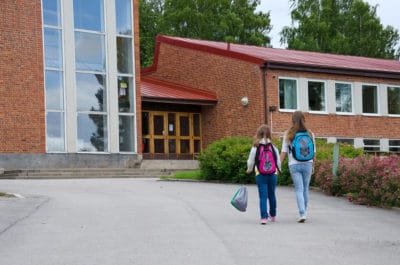
Eric Davis, chairman of the State Board of Education, urged patience for families with children in the upper grades. “While we are anxious to return all students, we know that teachers, principals, and students need a gradual transition over the next three months,” Davis said in a statement. “I ask our parents to remain patient, knowing that we are moving as quickly as is safely possible.”
In July, Cooper announced that schools would open for the 2020-21 school year under plan B, but he gave them the option of plan C. Totally in-person instruction was not allowed.
A majority chose to start the year with plan C, and a few of those are making the transition to plan B. (You can see what each district is doing in a database compiled by the North Carolina School Board Association.)
Sign up for the EdDaily to start each weekday with the top education news.
State Republican leaders — Senate President Pro Tempore Phil Berger, R-Rockingham; Lt. Gov. Dan Forest, Cooper’s GOP opponent in the governor’s race; and Catherine Truitt, candidate for state superintendent of public instruction — had called Wednesday for Cooper to offer the option of full-time in-person instruction in public schools.
Asked whether the timing of his announcement was a response to that, Cooper said: “Our No. 1 priority from the get-go has been to get our children back into the classroom. We know the great benefits of in-person learning. So, this has been our plan as our metrics improve.
“It’s irresponsible to say we’re going to fill up our classrooms now with no safety measures. And without masks. The science is clear on that.”
He also said that restrictions could be tightened again if the health and safety risk rises.
Superintendent of Public Instruction Mark Johnson welcomed the move. “It’s great news today that we are a step closer to providing the option of in-person learning to families who want their children to return to school,” Johnson said in a statement. “While the governor, the State Board of Education, and I have our differences, I join with them today to encourage local school board members to take advantage of this change and open all schools safely.”
Berger said the decision didn’t go far enough.
“Parents, teachers, and students are at their wits end struggling to try to make virtual learning work,” Berger said in a statement. “This announcement from Gov. Cooper is a step in the right direction, but he needs to provide all parents with the option of full-time, in-person instruction. His new plan ignores the needs of low-income and exceptional students in middle and high schools for in-person instruction.
“We continue to hear that these decisions are being made based on ‘science.’ What is the science that says it’s safe for 5th graders to be in school full time, but it’s not safe for 6th graders?”
Tamika Walker Kelly, an elementary educator who is president of the North Carolina Association of Educators, expressed caution.
“As NCAE has been saying since the start of this pandemic, returning to in-person instruction is the goal for every educator in North Carolina, but it must be done safely to ensure the health of both educators and students,” Kelly said in a statement. “Local school districts already have significant flexibility to open for in-person instruction, and loosening guidelines further is flirting with danger.
“Maintaining a minimum six-foot social distance at all times is a critical safety measure for both educators and students, and we will not recommend for any educator to enter a non-distancing classroom without a properly fitted N-95 mask to protect their health, and the health of everyone around them.”
Recommended reading
